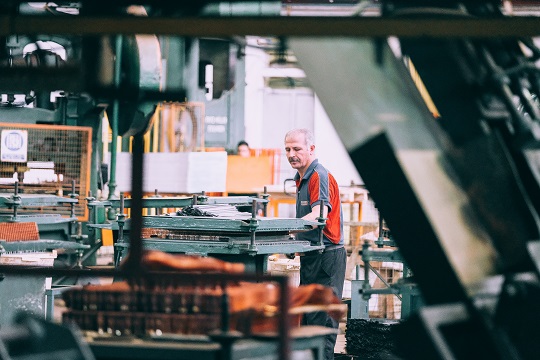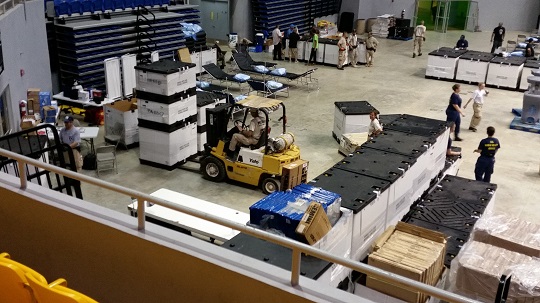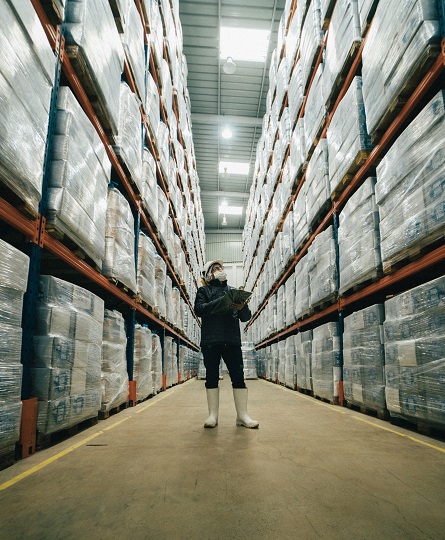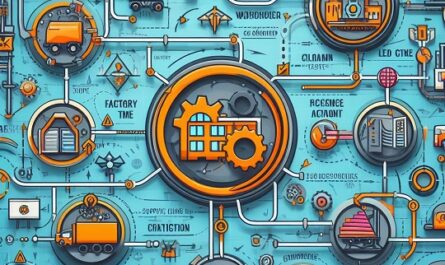Manufacturing expenses are a critical aspect of running a production-oriented business. They encompass all the costs incurred in the process of transforming raw materials into finished products.
Accurately tracking and understanding these expenses is vital for cost control, pricing strategies, financial reporting, and overall business success.
In this comprehensive guide, we’ll delve into the various components of manufacturing expenses, shedding light on what should be counted as manufacturing expenses and how to manage them effectively.
Before we go further into this topic, don’t forget to follow my LinkedIn account. You’ll get more helpful insights on supply chain management there.
Table of Contents
Direct Materials
Direct materials are the fundamental building blocks of any product. They are the raw materials and components directly used in the manufacturing process. These materials can vary greatly depending on the industry and the products being produced. Direct materials expenses include:
- Cost of Raw Materials: This comprises the cost of purchasing the materials needed for production. It’s important to factor in the unit cost of these materials and any fluctuations in market prices.
- Transportation Costs: The expenses incurred to transport raw materials from suppliers to the production facility. This can include shipping charges, customs duties, and other related costs.
- Material Handling Costs: The expenses associated with storing, managing, and moving raw materials within the production facility. This includes costs for forklifts, storage space, and material handling equipment.
- Inventory Costs: Costs related to maintaining inventory levels, including storage and insurance expenses.
Direct Labor
Direct labor represents the human element in the manufacturing process.

It includes the wages, benefits, and other compensation paid to workers directly involved in producing goods. Direct labor expenses include:
- Wages and Salaries: The basic compensation paid to production line workers, machine operators, and other employees directly engaged in manufacturing activities.
- Overtime Pay: Additional compensation for hours worked beyond the regular work schedule, which can significantly impact manufacturing expenses during periods of high demand.
- Benefits: Costs associated with employee benefits, such as health insurance, retirement plans, and paid time off.
- Training and Development: Expenses for training programs to enhance the skills and productivity of manufacturing employees.
Manufacturing Overhead
Manufacturing overhead is a broad category encompassing indirect costs that support the manufacturing process but are not directly attributable to a specific product. These expenses include:
- Indirect Labor: These are the wages of employees who are essential for the manufacturing process but don’t directly produce goods. This category includes supervisors, quality control inspectors, maintenance workers, and administrative personnel.
- Indirect Materials: Materials used in manufacturing, but whose costs cannot be easily traced to specific products. Examples include lubricants, cleaning supplies, small tools, and miscellaneous consumables.
- Utilities: Expenses associated with providing utilities such as electricity, water, gas, and other resources essential for manufacturing operations.
- Depreciation and Amortization: The allocation of costs associated with machinery, equipment, and facilities over their useful life. This is typically included in manufacturing overhead.
- Rent and Facility Costs: Costs of renting or owning manufacturing facilities, including property taxes, insurance, and property maintenance.
- Maintenance and Repairs: The expenses related to the upkeep and repair of manufacturing equipment to ensure smooth production processes.
- Taxes and Insurance: Property taxes and insurance for manufacturing facilities, which are part of the overhead costs.
- Other Overhead Costs: Miscellaneous expenses that support the manufacturing process, including factory supplies, safety equipment, and quality control expenses.
You might also like:
- Common Manufacturing Trade-offs and How to Determine Your Priorities
- How to Strike a Balance: Automation vs. Human Power in the Supply Chain
Depreciation and Amortization
Depreciation and amortization are vital elements of manufacturing expenses, even though they often fall under the broader category of manufacturing overhead. These two accounting methods help allocate the cost of long-term assets over their useful life.
- Depreciation: Depreciation applies to tangible assets like machinery, equipment, and buildings. It involves spreading the initial cost of these assets over several years, reflecting their decreasing value over time. Depreciation is a non-cash expense and, as such, is a crucial part of determining a company’s overall manufacturing expenses.
- Amortization: Similar to depreciation, amortization applies to intangible assets such as patents, copyrights, and trademarks. These assets also have a finite useful life, and amortization allows a company to allocate their cost over time.
Supplies
Supplies play a vital role in maintaining a smooth manufacturing process.

These are the consumables required to keep operations running efficiently, and they are part of manufacturing expenses. Supply costs may include:
- Lubricants: Essential for keeping machinery and equipment running smoothly.
- Cleaning Supplies: Necessary for maintaining a clean and safe working environment.
- Other Consumables: These may include small tools, safety equipment, and various items used in day-to-day operations.
Quality Control and Inspection
Maintaining product quality is paramount in manufacturing. Costs associated with quality control and inspection are considered manufacturing expenses and are essential for ensuring that products meet quality standards.
- Testing Equipment: Expenses related to purchasing, maintaining, and calibrating equipment used to test and inspect products.
- Quality Control Personnel: The salaries and benefits of individuals responsible for inspecting products and ensuring they meet specifications.
- Documentation and Record-Keeping: Costs associated with maintaining quality records and compliance documentation.
Packaging
Packaging is the final touch in the manufacturing process, preparing products for distribution and sale. Packaging expenses include:
- Packaging Materials: The cost of materials such as boxes, labels, and protective packaging used to package finished goods.
- Labor Costs: The wages and benefits of workers responsible for packaging products.
- Equipment Costs: Expenses associated with packaging machinery and equipment.
Shipping and Freight
Once products are manufactured and packaged, they need to be transported to distribution centers or customers. Shipping and freight expenses are part of the manufacturing process:
- Freight Costs: The expenses associated with transporting finished products to their destination. These can include trucking costs, airfreight charges, and shipping fees.
- Customs and Duties: If the products are being shipped internationally, customs duties and import taxes should be accounted for.
- Insurance: Shipping insurance to protect against loss or damage during transit.
You might also like:
- How to Improve Overall Equipment Effectiveness (OEE)
- The Vital Role of Production Planning and Inventory Control (PPIC): Ensuring Efficiency and Success
Record Keeping and Accounting
Accurate record-keeping is crucial in managing manufacturing expenses effectively.

Proper documentation ensures that all expenses are accounted for, helping businesses make informed decisions and remain compliant with tax and accounting regulations.
- Accounting Software: The cost of implementing and maintaining accounting software that helps track and categorize manufacturing expenses.
- Professional Fees: Expenses associated with hiring accountants or financial consultants to ensure accurate accounting and financial reporting.
- Compliance Costs: Expenses related to meeting regulatory and tax compliance requirements.
Conclusion
Manufacturing expenses encompass a wide range of costs that are essential for producing and delivering products.
Understanding and managing these expenses are critical for running a profitable manufacturing business.
By categorizing and tracking expenses such as direct materials, direct labor, manufacturing overhead, and other related costs, companies can make informed decisions, set competitive prices, and ultimately achieve success in the competitive manufacturing landscape.
In summary, effective management of manufacturing expenses is key to profitability, and it’s essential to stay informed about changes in costs, maintain accurate records, and continuously seek ways to optimize operations for greater efficiency and cost control.
Whether you’re a small-scale manufacturer or part of a large industrial operation, keeping a close eye on manufacturing expenses is fundamental to your business’s financial health and success.
I hope you find it helpful!
Please share this article with your colleagues so they can also benefit. For more insights on supply chain management, follow my LinkedIn account. You’re free to use all articles on this blog for any purpose, even for commercial use, without needing to give credit.
 by
by 
